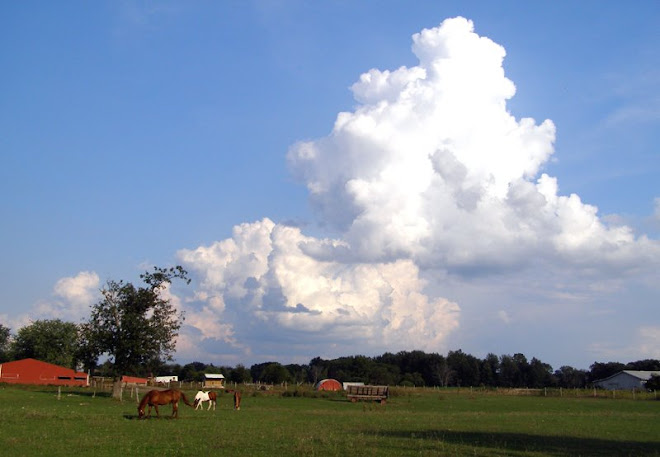Here's hoping the technical difficulties will be resolved soon! I just reloaded the photos, hoping everyone will be able to see them. Blogger, please be well. Click on photos to enlarge.
Click on photos to enlarge.My nephew Paul, and his wife and kids came to the farm this weekend for a photo shoot of our son Peter's band Meridian for their new CD. We had SO MUCH FUN! Course it didn't hurt that a lot of photography happened. I followed Paul and the band around snapping my own pictures of the experience.
Mike Z, bass player, also has other talents:

Paul is a great photographer (a graphic designer by profession), and he led the guys through at least 10 scenarios in an hour and a half!
Here is Paul and Manda's third child, Aden, picking a queen anne's lace from last year in the meadow. It made me think about all the photographs we see, and what we don't see outside the frame. What else was going on around that scene, who was there, what was the mood?

The mood for us yesterday was happy, productive, and fun. I loved every minute.

Below, Brian is the lead singer, front. Then drummer Mark, Mike Z, then our son Peter, guitarist, in the back looking away.

They ended up in my studio, which Don and Peter fixed up for me (used to be a chicken coop). The light in there is great. In fact when Peter and Brian had a final photo session while they played, the sound was great too. Maybe it should be a sound studio too!

Aden, Eli and Lydia watched their dad shoot. Have you noticed how comfortable kids are with cameras these days?


If you haven't already, give a listen to Meridian by clicking here. You can also download their new album, "Listen to your breaking heart," which is wonderful, in my humble and unbiased opinion.







 Often needles and branches fall onto a neighboring tree of a different species. It's a simple thing, but I never tire of looking at the configurations these couplings make. The unity touches me.
Often needles and branches fall onto a neighboring tree of a different species. It's a simple thing, but I never tire of looking at the configurations these couplings make. The unity touches me.





























 He was also an artist in his own right, drawing this pen & ink of a hart, which he turned into the personalized book plate that is inside the cover of this book. This drawing was also etched into the headstone at my parents' grave (photo at bottom). His surname was Hart, and a 'hart' is another name for a deer. He loved the verse from the Psalms:
He was also an artist in his own right, drawing this pen & ink of a hart, which he turned into the personalized book plate that is inside the cover of this book. This drawing was also etched into the headstone at my parents' grave (photo at bottom). His surname was Hart, and a 'hart' is another name for a deer. He loved the verse from the Psalms:
















